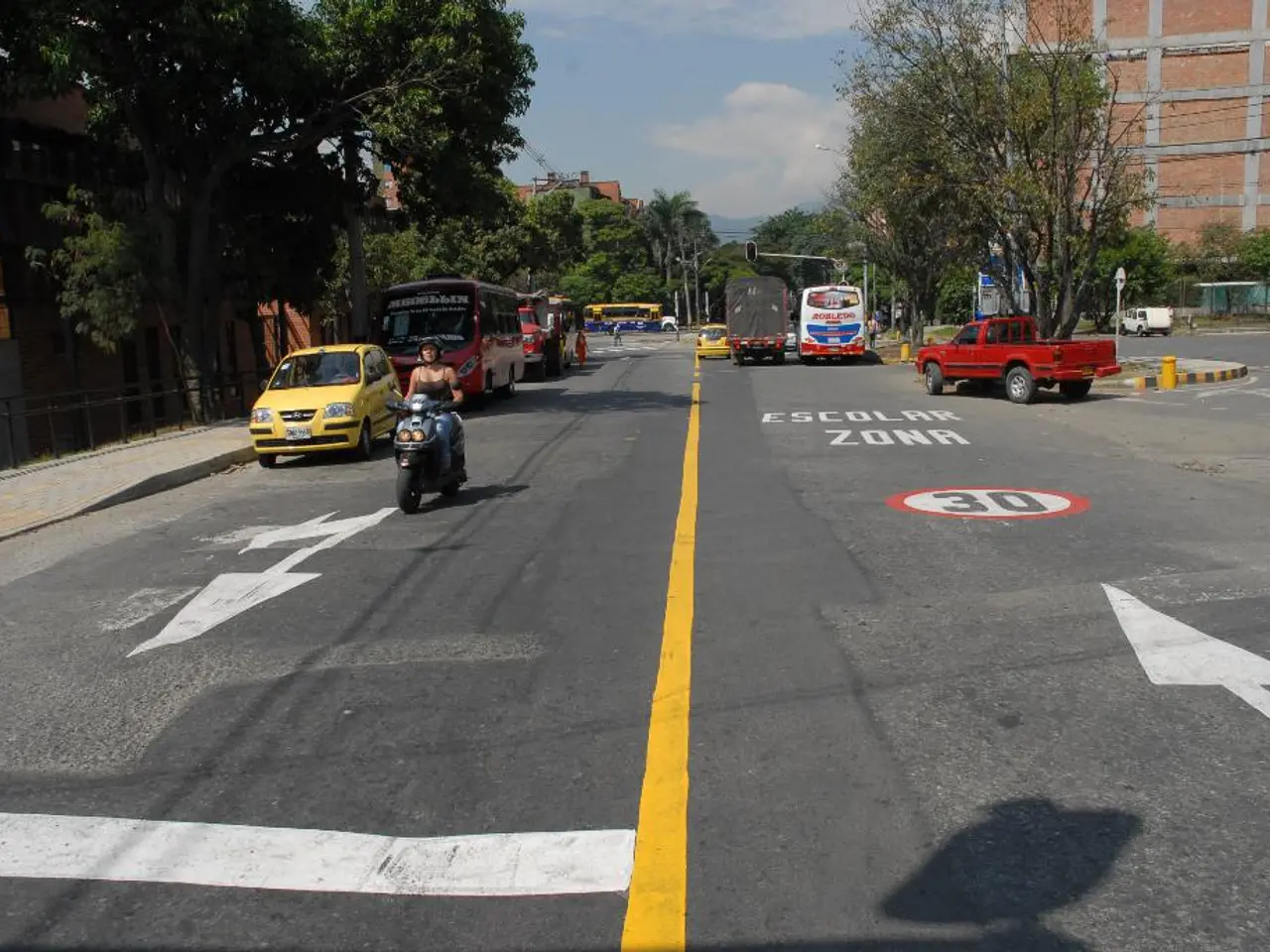Heed, motorist, the sign's implications extend to you as well!
The European Agreement concerning the International Carriage of Dangerous Goods by Road, or ADR, plays a crucial role in ensuring the safe transportation of hazardous materials across the continent. Two signs, Sign 261 and Sign 269, are essential in this regard.
Sign 261 prohibits the passage of vehicles that must be equipped with an orange warning panel according to ADR, regardless of whether the cargo is water-hazardous or not. Emergency vehicles, however, are exempt in emergency situations.
On the other hand, Sign 269 prohibits vehicles carrying more than 20 liters of water-hazardous substances in water protection areas or near drinking water wells and waterworks. Typical water-hazardous substances include mineral and tea oils, acids, alkalis, certain metal and halogen compounds, and numerous organic solvents.
Disregarding these prohibitions can lead to fines. For a repeat offense, the fine increases to 250 euros, and there is also a 1-month driving ban. Disregarding Sign 269 specifically results in a fine of 100 euros and 1 point in the driver's license register.
Exceptions to these rules are rare and require close coordination with the responsible water authorities. Additional signs may restrict the prohibition in certain cases, such as for local traffic free to properties or businesses within the prohibited area.
The ADR agreement ensures uniform standards throughout Europe and specifies when a transport is considered hazardous - and thus also when a vehicle falls under the ban indicated by sign 261. It also outlines the regulations for the transport of dangerous goods, including labeling, packaging, securing cargo, vehicle and equipment requirements, and driver qualifications.
Truck drivers involved in ADR transports need an ADR certificate and regular training. ADR vehicle and equipment requirements prescribe special technical equipment and safety measures for ADR transports. The authority responsible for granting exceptions that allow additional signals to ease restrictions in the transport of dangerous goods is regulated under the ADR, typically managed by the responsible national Ministry of Transport or a designated safety authority.
The protection of ground and drinking water resources takes precedence in principle. These signs are often placed on bridges or tunnels to reduce the risk of water pollution.
It's important to note that the prohibition applies to all vehicle types, including vans, cars with trailers, and tanker trucks. Environmental or criminal proceedings may be initiated if the disregard results in hazards or damages.
In summary, Signs 261 and 269 are crucial in ensuring the safe transportation of hazardous materials in Europe. By adhering to these signs and the ADR regulations, we can help protect our environment and resources.
Read also:
- Understanding Hemorrhagic Gastroenteritis: Key Facts
- Stopping Osteoporosis Treatment: Timeline Considerations
- Tobacco industry's suggested changes on a legislative modification are disregarded by health journalists
- Expanded Community Health Involvement by CK Birla Hospitals, Jaipur, Maintained Through Consistent Outreach Programs Across Rajasthan








